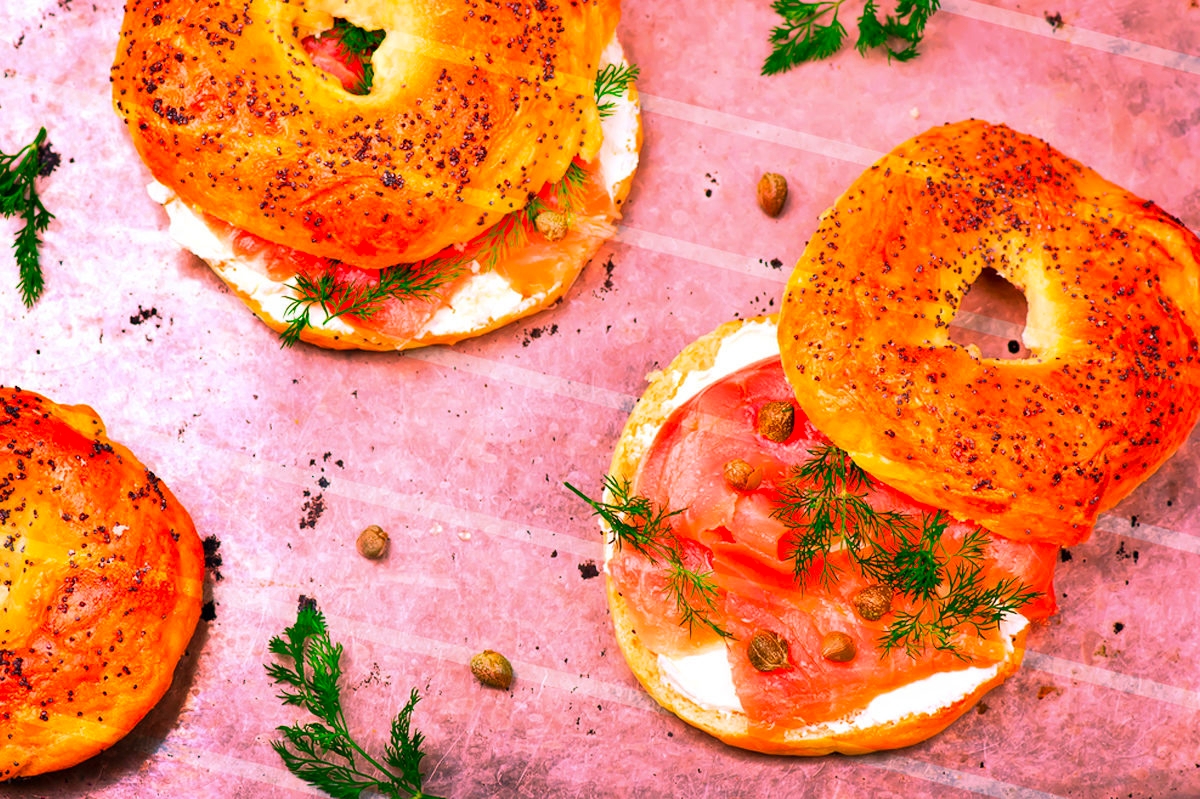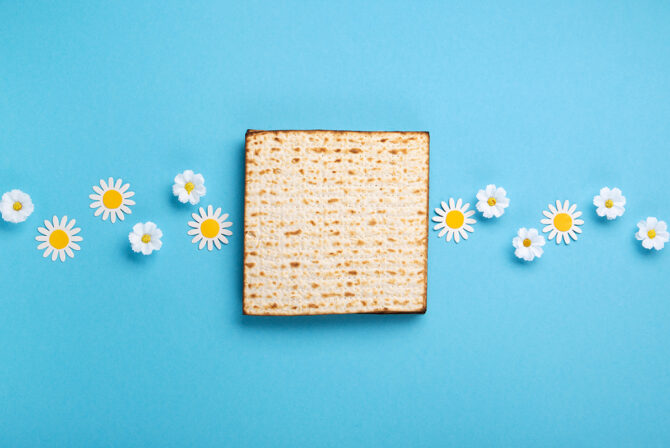The baby has arrived. It’s a boy! Which, assuming the little guy is healthy, means you have exactly one week to plan your son’s bris. You’ve already been in touch with the mohel, you’ve informed your friends and family, and all that’s left, besides figuring out how to use the sitz bottle on your nether regions, is the food.
Yes, it’s true. You can’t have a Jewish gathering without food. All joking aside, this idea actually comes down to us from the rabbis in the Talmud. After one has fulfilled a mitzvah (commandment), there is an obligatory festive meal. It’s called a s’udah mitzvah.
There are varying traditions of what to serve at this meal, but one thing is for certain: There must be wine for Kiddush and bread for HaMotzi. (In Judaism, bread must be consumed for it to constitute a meal.) It doesn’t have to be challah, but why not a challah? Some families choose to order a challah from the bakery that weighs the equivalent of the baby’s birth weight. Families who come from the Near East and Africa have other traditional breads that are equally appropriate.
In some aspects, the food we serve at the bris bears a striking resemblance to the food served at the s’udah ha’avraah (the meal of condolence) after a funeral: bagels, hard-boiled eggs, and other round foods symbolizing the continuity of life. There is also a tradition that these foods are eaten to acknowledge the infant’s sense of loss, having left a secure and safe place for the uncertain outside world.
This meal is also a perfect opportunity to incorporate the culinary traditions of the entire family.
READ: How to Talk to Kids About the Bris
Some Ashkenazic families, mine included, bring out the chickpeas for the bris. I was completely unfamiliar with this tradition until our son was born and one of the first things my grandmother, z”l, said was, “I’ve got to get started on the nahit for next week.” Called nahit, or arbes, chickpeas are round, a shape that suggests fertility and life, and is a traditional choice when a baby is born. Other symbolic foods include fish and lentils.
In some Persian families, a tray of apples is put out with the expectation that young couples will partake in them. Kanafeh, a cheese-filled pastry soaked in a sweet syrup and often garnished with pistachios, is a traditional choice for many Mizrahi families.
The Yiddish lullaby, Rozhinkes mit Mandlen (Raisins and Almonds), provides the recipe of a traditional item served at a bris. The tenderness of the almond and the sweetness of the raisin symbolize our hopes for this new life. Our family also serves Jordan almonds for the very same reason.
Some families choose to have a dairy meal; the milk recalling childhood and the sweetness of baby’s first nourishment. Others follow a tradition of serving a meat meal. Those whose families are accustomed to serving meat at a bris do so even during the nine days leading up to Tisha B’Av, a time in our calendar when we traditionally abstain from eating meat.
READ: How to Care for Your Newly Circumcised Baby
Speaking of calendar restrictions, should the bris fall on a fast day, the festive meal is postponed until sundown when the fast is broken.
Once you have determined whether the meal will be dairy or meat, then choose the foods that you will enjoy. It can be as simple as bagels, cream cheese, vegetable, and lox. Or it can be more extravagant. Whatever you decide, you can enlist the help of family or friends to make the arrangements. Let that be something someone can do while you spend the time resting and enjoying your son.
[Note: these suggestions are applicable to your daughter’s baby naming as well.]








